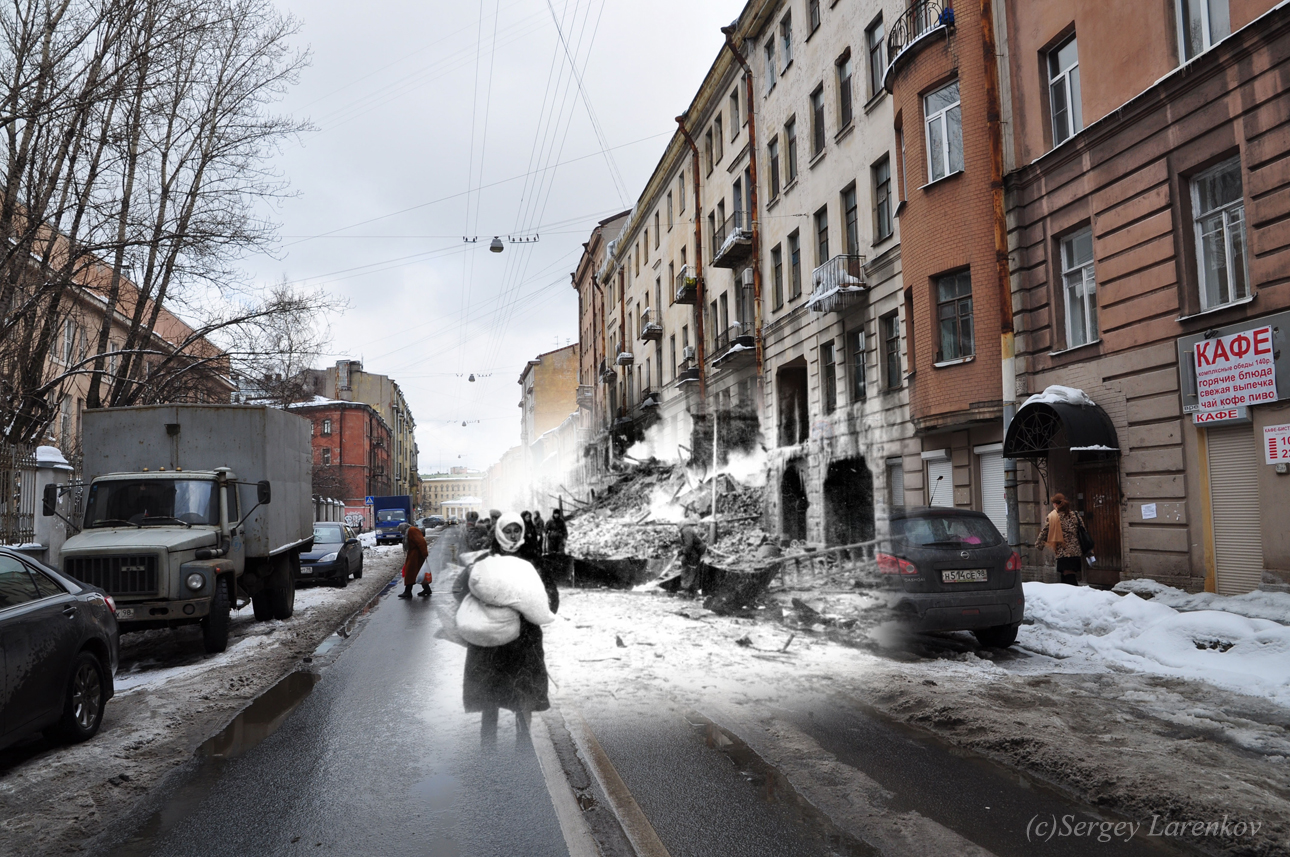William Faulkner once wrote that “The past is never dead. It’s not even past.” Oft-quoted and perhaps less often understood, the remark may have more resonance in some settings than others. Given the extent to which amnesia seems to be spreading throughout American public life, Faulkner’s insight may seem increasingly peculiar. (He isn’t read much anymore, and that, too, may be part of the problem.) The question remains of who might be working today to help people reflect on the relationship between past and present, and between collective memory and mass amnesia. One answer to that question is Sergey Larenkov.

Sergey Larenkov blends together photographs from World War II and the present to capture the recurrent disruption, jarring continuity, and inevitable denial of the past in the present. More strange yet is the suggestion that the shiny, visible world of the present is inhabited by ghosts that are continuing to act out their dramas of war and dispossession. If the past can continue so vividly in this virtual world, perhaps war’s destructiveness could recur just as easily in the world we expect to see: a seeming intrusion that fits right in as though it had been there all along. Perhaps it’s not even past.
You can see more of Sergey’s work here.
Photograph from “Siege of Leningrad 1942/2010” by Sergey Larenkov.
[…] across this image on one of my favorite blogs, No Caption Needed. The blog post is entitled “Seeing the Past in the Present,” and showcases the work of artist Sergey Larenkov. Larenkov uses archival images of Europe […]
Asides from the compelling nature of his work, I find Larenkov’s work interesting since I did an assignment similar to his work in a photography class I was in. In the class we had went to Balboa Park in San Diego equipped with our cameras and an image that portrayed a part of Balboa Park in the past. The assignment we were given was to overlap the image we brought of the past and the present day Balboa Park. The resulting images looked similar to the concepts of his work. Although our subject matter was not so dramatic, we were also able to explore the connection of past and present in a single image and appreciate the aspect of time in that place. When we explored this kind of image making, I had never had thought about the creation of images like these. My thoughts were quite confined to what I knew and have already explored. To get insight of what tragedies have happened to place through work such as his is amazing.